I spent many years learning how to draw realistically and then how to use color in oil painting well. I’m not the best realist artist out there but I’m sharing what I’ve learned over the years to help you become a realist artist today. I must say that realist oil painting is a lot more challenging than drawing because color mixing in oil painting is not the same thing as shading in colored pencil or painting in watercolor. In drawing artists shade via subsequent layering to build up a range of values. In oil painting we have to “guess” correct color, value and color temperature in one stroke! What I’m sharing here has taken me years to learn. I spent thousands of dollars on classical painting education that was hard to come by two decades ago. We’re are lucky to have proper art education available today in a form of atelier schools and on-line classes.
How color mixing works
Artists have various approaches to color mixing in oil painting. Some paint in full color from the start, others work on detailed underpainting before moving to color. Some pre-mix colors, others don’t. There is no wrong or right way of doing it. The oil painting technique comes with experience and varies in accordance with the artist’s personality.
Over the years I learned different ways of oil painting and I usually use them in a combination. Color mixing is the hardest part to master in oil painting. Even when your drawing is pretty good, oil painting can still be a huge challenge because of a different approach to color mixing. That’s why even when you get the exact list of colors used in artist’s artwork, you can’t really re-create the same beautiful result you see on YouTube.
Artists have to match color, color temperature and value in one stroke as opposed to achieving the same result via layering in colored pencils or watercolor. Therefore, artists must have a system in place to make color-mixing easy.
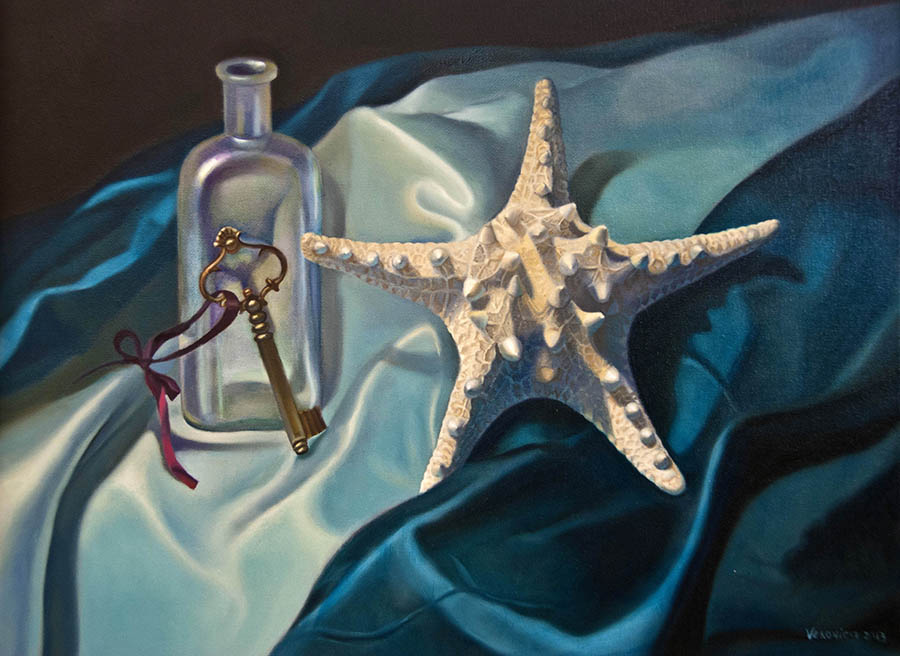
#1 Do underpainting in one color first
Underpainting serves three purposes.
- First, you establish your drawing on canvas. So it stays in place.
- Second, you put warm color underneath your painting. This process gives you a nice, warm tone that interacts with your colors at a later stage.
- Third, you establish basic pattern of light and shadow. It becomes a guide for your painting to control values.
Use warm brown underpainting
I use W&N artist’s oil color burnt sienna for underpainting in warm brown. Sometimes I add a touch of ivory black to darken the darkest areas in the painting. I keep everything rather transparent. Caravaggio used this oil painting technique in his art.
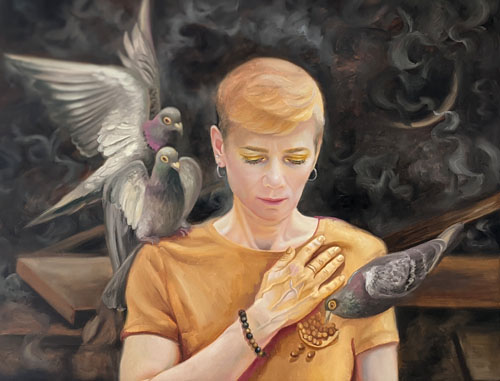
Use grey underpainting
Sometimes I underpaint my work in grays.
It’s a mix of 3/4 ivory black+1/4 warm brown with the increments of titanium white. (More on that below). This oil painting technique was used by many classically-trained artists including Ingres.
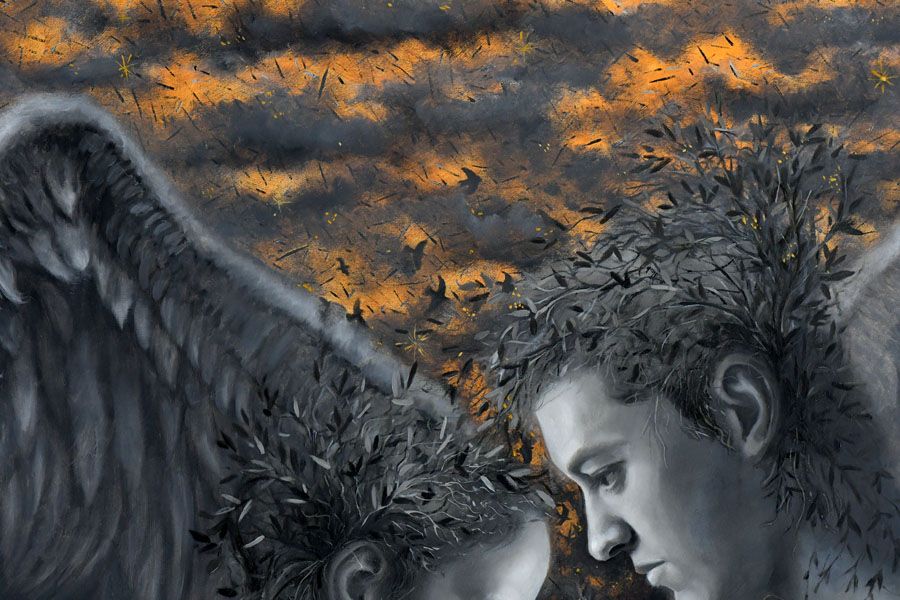
Use green underpainting
Some artists prefer the underpainting in dull green. White skin has a lot of green in it and this kind of underpainting becomes great to reveal cool shadows in the face, etc. There are many classical artists who used this oil painting technique. Beautiful, natural greens are Natural Pigments’ Antica Green Earth and Gamblin Terre Verte.
#2 Use your palette knife for color mixing in oil painting
#1 Use your palette knife, not the brush to mix the color strings. It’s the only way to mix large, clean batches of color.
#2 Use the palette knife to compare and to match the color you want to mix.

#3 Pre-mix your main colors
I premix batches of color for large areas to have consistency and color unity throughout my oil painting. It could be separate batches of color for my background, for a dress and the skin tones.
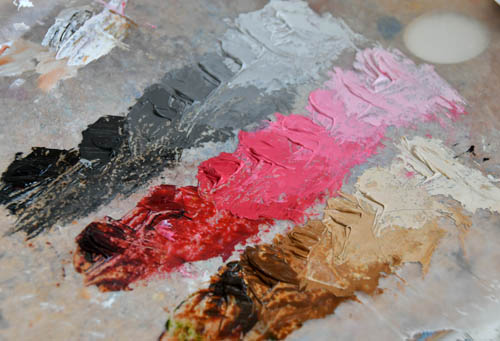
I premix color strings for skin tones as well. Colors vary depending on my project.
#4 Use grays to neutralize chroma in color mixing
It’s rare to see vibrant (high-chroma) objects around you. In fact, realist artists show restraint in using bright color because only one or two hues should be dominant with the other hues supporting them. So most colors must be toned down to give the realistic effect. Beginner artists and art collectors tend to paint and to collect very bright art. True understanding and appreciation of color mixing mastery grows overtime. By looking at Sargent’s & Bouguereau’s work you can see how muted yet realistic their colors are.
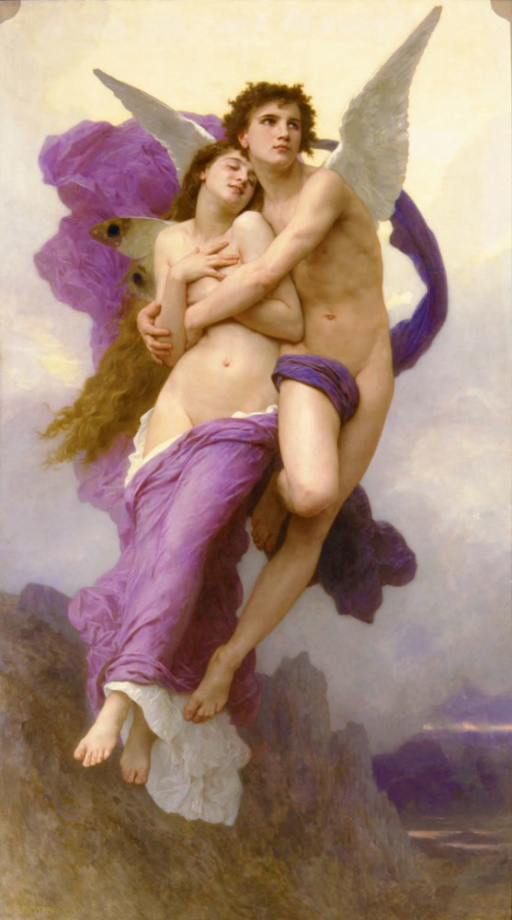
I use the grays to neutralize my tube colors.


Chroma is the brightness of a color.
The easiest way to tone down bright colors is to use a slightly warm gray. It’s mixed from 3/4 ivory black+1/4 warm brown with the increments of titanium white. The strip of grays represents the value scale.
To keep color mixtures fresh for more than one day, I wrap them up in wax paper. Airtight oil paint stays fresh for 2+ days on average.
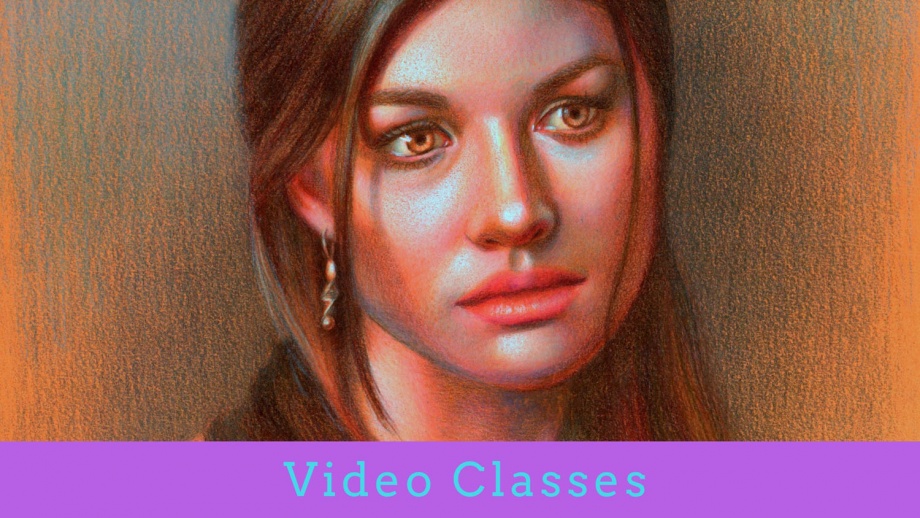
Color harmony in oil painting from art history
There are different approaches to color mixing in painting. The Impressionists painted without the use of black. Their paintings taught me to see colors in the shadows. The old masters painted with black to create strong contrast.
Color unity or color harmony are present in all classical paintings. You’ll find explanations of color harmonies in classical oil paintings in this article 5 Tips that’ll make you better at oil painting: https://veronicasart.com/5-tips-thatll-make-you-better-at-oil-painting/
Video explaining color mixing in oil painting:
Basic Art supplies:
Panels & canvas:
- Ampersand gessobord: https://amzn.to/2WWioP1
- Da Vinci pro Panels: https://amzn.to/36qrgQf
- Jack Richeson panels: https://amzn.to/3gfk6CI
- Sample wood panel without gesso: https://amzn.to/3re7q4g
- Da Vinci pro panels, gessoed medium texture: https://amzn.to/2PE1NhO
- Sample gessoed, wood panel: https://amzn.to/3e5dtnZ
Don’t buy the cheapest canvases at craft stores and online! Their gesso (white ground) is very low quality that affects everything from paint application to oil paint adherences to archival properties.
- Mono eraser: https://amzn.to/3e6SHRw
- Kneaded eraser: https://amzn.to/3gaZWtH
- Oil paint: Gamblin intro set: https://amzn.to/2zt5gbd
- Linseed oil: https://amzn.to/3ebrixQ or https://amzn.to/2LWkdoP
- Varnish for oil and acrylic paintings only: https://amzn.to/3bUJ2fh
- White transfer paper: https://amzn.to/3gAaPFo or https://amzn.to/2XMdBPg
- Loew-Cornell C101-1 4-Piece Grey Transfer Paper https://amzn.to/2Zx3Wyv
Other helpful articles about oil painting techniques:
5 tips in realist oil painting: